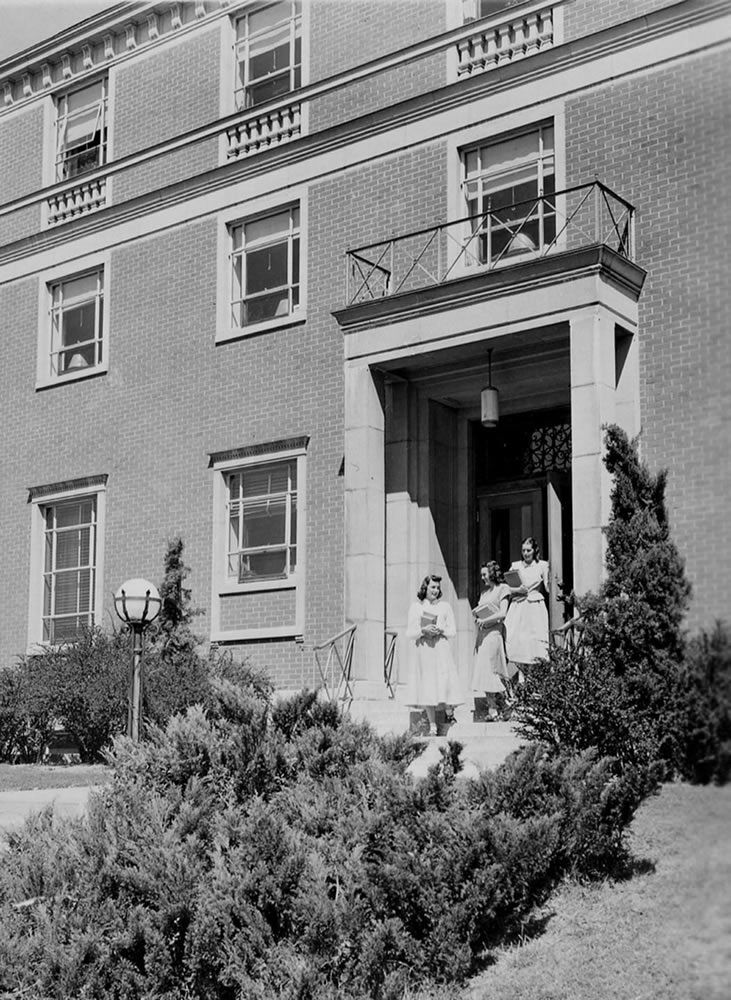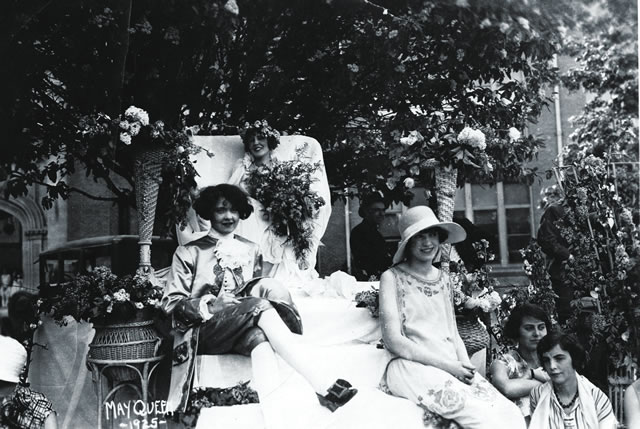
Most of the rock wall that borders the east side of University Street from 100 South to near 400 South was built by WPA workers during the Great Depression. (Photo by Dave Titensor)
Of the thousands of students who have walked along University Street next to the rock wall that outlines the western edge of the University of Utah campus, few realize that it and many other structures they see and use all the time are the result of federally funded projects during the Great Depression of the 1930s. The U.S. government created programs in those years to try to put people back to work by allocating federal funds to finance jobs, buildings, and other projects. The University of Utah received its share of these projects through the Works Progress Administration, which provided funding for unemployed workers.

The WPA rock wall extended to the corner of the University of Utah campus where Carlson Hall once stood. (Photo courtesy Special Collections, J. Willard Marriott Library, University of Utah)
Utah in 1933 had an unemployment rate of 36 percent, the fourth-highest in the country, and between 1932 and 1940, the state’s unemployment rate averaged 25 percent. The percentage of Utah workers on federal work projects was far above the national average. At the U, the WPA arranged for employment for more than 700 students, with projects proposed by University department heads. The jobs ranged from working as laborers on buildings and grounds to being readers, library and museum assistants, cafeteria workers, and lab and research technicians. Students could thus work off a portion of their tuition, but the campus benefited, as well.
For the majority of the projects, the U would provide the materials and the WPA would pay for the labor. From 1935, when the WPA was established, through 1941, the expenditure at the University on such projects was $726,988, with the WPA providing $450,320 and the U contributing the remainder.
The projects included leveling and landscaping 89 acres of the campus, with numerous trees and shrubs planted and a sprinkling system installed. Campus streets were extended, graded, and surfaced with the aid of borrowed state equipment. Several tennis courts were constructed, and larger sewers were laid, along with new water mains, gas pipelines, steam lines, and power lines. Several miles of curbing and guttering were constructed, along with extensive concrete and masonry retaining walls, including the stone wall along University Street.
The look of the lower, historic campus of the University of Utah owes much to those long-forgotten WPA programs.
—Roy Webb BA’84 MS’91 is a multimedia archivist with the J. Willard Marriott Library and a regular contributor to Continuum.







